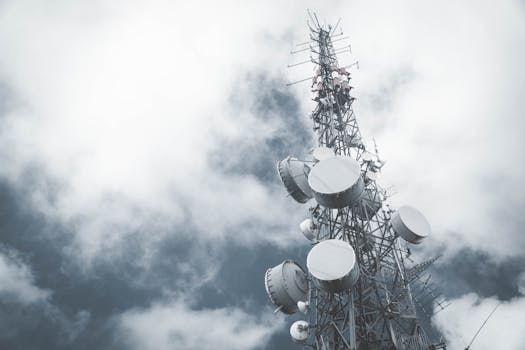Breaking Barriers: How Recent Developments are Transforming Satellite Communication

Breaking Barriers: How Recent Developments are Transforming Satellite Communication
Satellite communication is no longer a niche technology, but a vital part of our global communication infrastructure. Recent developments in satellite communication are breaking barriers and transforming the way we communicate. With advancements in technology and infrastructure, satellite communication is becoming more efficient, accessible, and reliable. Satellite communication is revolutionizing the way we connect with each other, and it’s essential to understand the recent developments that are driving this transformation.
Advancements in Satellite Technology
One of the significant developments in satellite communication is the advancement in satellite technology. New satellite constellations, such as OneWeb and Starlink, are being launched, providing higher speeds, lower latency, and greater connectivity. These satellites are equipped with advanced technologies, such as phased array antennas and high-gain antennas, which enable faster and more reliable communication. Additionally, the development of reusable rockets has reduced the cost of launching satellites, making it more accessible for companies to launch their own satellites.
The use of artificial intelligence and machine learning in satellite communication is also becoming more prevalent. AI-powered systems can analyze vast amounts of data, predict maintenance needs, and optimize satellite performance. This enables satellite operators to reduce costs, improve efficiency, and provide better services to their customers. Furthermore, the integration of Internet of Things (IoT) devices with satellite communication is opening up new opportunities for remote monitoring, tracking, and control.
Infrastructure Development
The development of satellite communication infrastructure is also playing a crucial role in transforming the industry. The establishment of ground stations and teleports is enabling the transmission and reception of satellite signals, providing connectivity to remote and underserved areas. The use of fiber optic cables is also becoming more widespread, enabling the transmission of large amounts of data between satellites and ground stations.
The development of 5G networks is also having a significant impact on satellite communication. The integration of 5G networks with satellite communication is enabling the provision of high-speed, low-latency connectivity to a wide range of devices, including smartphones, tablets, and IoT devices. This is opening up new opportunities for remote healthcare, online education, and emergency response services.
Applications and Use Cases
The recent developments in satellite communication are enabling a wide range of applications and use cases. Remote sensing and earth observation are becoming increasingly important, with satellites providing critical data for climate monitoring, disaster response, and agricultural management. The use of satellite communication is also enabling the provision of broadband services to remote and underserved areas, providing access to education, healthcare, and economic opportunities.
The development of satellite-based navigation systems, such as GPS and Galileo, is also having a significant impact on various industries, including aviation, maritime, and transportation. The use of satellite communication is enabling the provision of real-time navigation and tracking services, improving safety, efficiency, and productivity.
Conclusion
In conclusion, recent developments in satellite communication are breaking barriers and transforming the way we communicate. With advancements in technology and infrastructure, satellite communication is becoming more efficient, accessible, and reliable. The applications and use cases of satellite communication are vast and varied, enabling the provision of critical services, such as remote sensing, broadband, and navigation. As the satellite communication industry continues to evolve, we can expect to see even more innovative solutions and applications that will transform the way we live and work.